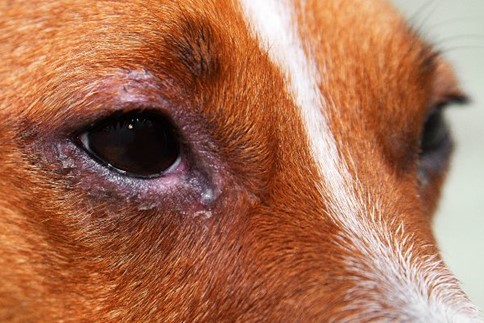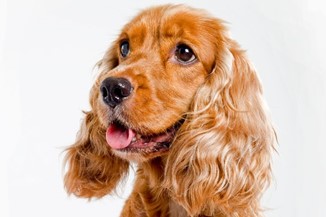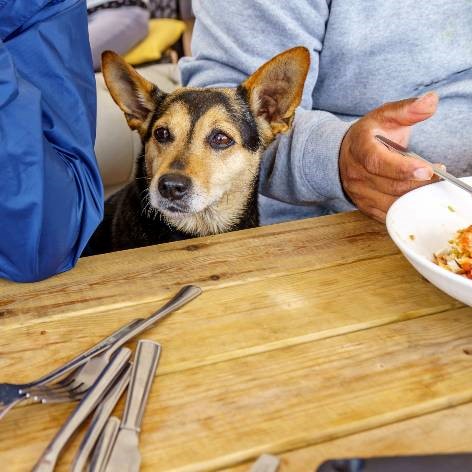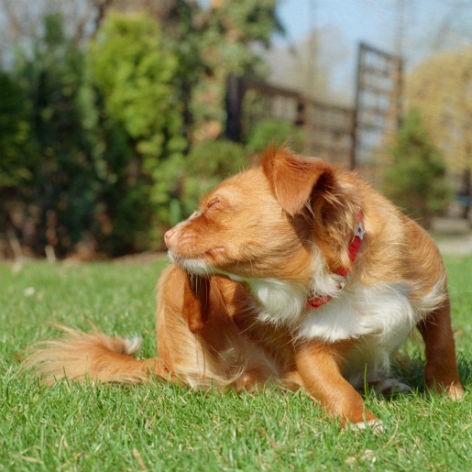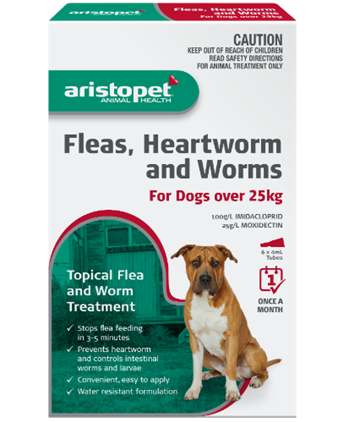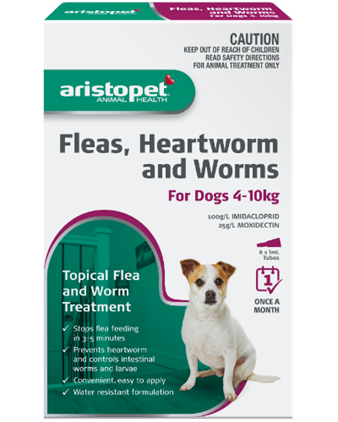4. Third eyelid protrusion (Cherry Eye)
As well as upper and lower eyelids, dogs also have a third eyelid in the inner corner of each eye. Occasionally it can stick out and often looks like a cherry. If this happens, it usually needs surgical repair. It is more common in dog breeds such as Beagles, Bulldogs, Cocker Spaniels, Bloodhounds, and Shih Tzu.
5. Dry Eye (Keratoconjunctivitis Sicca)
Dry eye happens when a dog's tear glands don't produce enough tears. Usually, when an eye blinks, tears are washed over the eye's surface, helping to lubricate and clean the eye.
If there are not enough tears produced, the eyes are less lubricated, less clean, and more susceptible to dirt and dust damage.
This can result in corneal scratches, ulcers. If your dog has dry eye, their eyes will be red, and they will squint, blink and paw at their eye. Your vet can help assess the cause of the dry eye and recommend treatment options.
6. Eyelid Lumps
A veterinarian should always check over lumps and bumps on your animals, and masses on or around the eyes are no different. Often, masses around eyes are cysts or benign tumours; however, your vet can help assess them and recommend the best course of action such as surgical removal.
7. Cataracts
Cataracts occur in dogs as they age, just like they do for people. Your dog's eyes may start to appear cloudy or white. As they develop, cataracts can limit your dog's ability to see and can eventually lead to blindness. Some other diseases, such as diabetes, can also cause the formation of cataracts. It is best to see your veterinarian if you notice any cloudiness in your dog's eyes.



